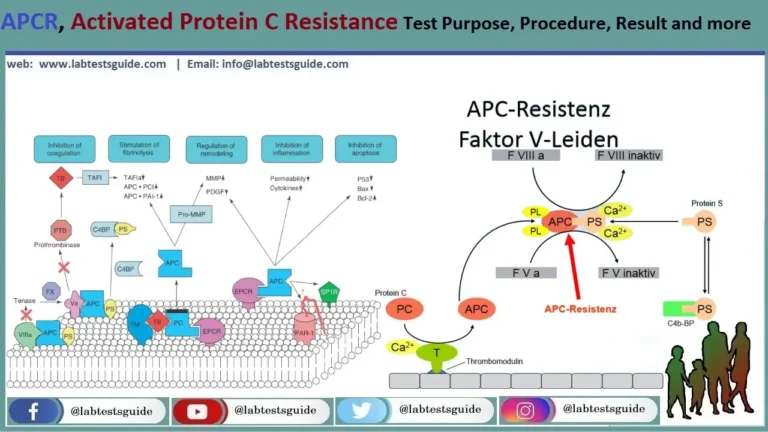Alkp stands for “Alkaline phosphatase”. Alkaline phosphatase is an enzyme that is present in various tissues in the body, including the liver, bones, intestines, and placenta. It plays a role in several important biological processes, including the metabolism of nucleic acids and the synthesis of proteins.

| Also Known as | ALP, ALK, Alkp, ALK PHOS, Isoenzyme Test, ALP Fractionation Test |
| Test Purpose | For measures the amount of alkaline phosphatase enzyme in your bloodstream |
| Test Preparations | No Need any Preparations, But Overnight Fasting Is Preferred. |
| Test Components | Alkaline Phosphatase |
| Specimen | 2 ML (0.5 ML Min.) Serum From 1 SST. Hemolysed Specimens Are Not Acceptable. Ship Refrigerated Or Frozen. Overnight Fasting Is Preferred. |
| Stability Room | 4 Hours |
| Stability Refrigerated | 72 Hours |
| Stability Frozen | 4 Weeks |
| Method | IFCC |
| Download Report | Download Report |
Alkaline Phosphatase (ALP) is an enzyme found in:
- Bone
- Liver
- Placenta
- Kidney
- Intestines
Functions of Alkaline Phosphatase:
The primary function of alkaline phosphatase is to remove phosphate groups from various molecules, particularly from nucleotides and proteins. It plays a crucial role in the metabolism of nucleic acids and the synthesis of proteins.
Why Get Tested :
- Alkaline phosphatase is estimated to detect diseases of liver and bone.
- Alkaline phosphatase is the best marker for obstructive jaundice.
- Alkaline phosphatase is the marker:
- For hepatic metastasis.
- In parathyroid diseases.
- Vitamin D deficiency.
- Acute pain in the abdomen.
When to Get Tested :
As part of a routine liver panel or when you have symptoms of a liver or bone disorder
When ALP Test Orderd :
An ALP test may be ordered as part of routine laboratory testing, often with a group of other tests called a liver panel. It is also usually ordered along with several other tests when a person has symptoms of a liver or bone disorder.
Signs and symptoms of liver involvement may include:
- Weakness, fatigue
- Loss of appetite
- Nausea, vomiting
- Abdominal swelling and/or pain
- Jaundice
- Dark urine, light-colored stool
- Itching (pruritus)
Some examples of the signs and symptoms suggesting a bone disorder include:
- Bone and/or joint pain
- Increased frequency of fractures
- Deformed bones
Sample Required :
- It is done on the Serum of the patient.
- A fasting sample is a better choice.
- This test can be done on the random sample as well.
- How to get good serum: Take 3 to 5 ml of blood in the disposable syringe or in vacutainer. Keep the syringe for 15 to 30 minutes at 37 C and then centrifuge for 2 to 4 minutes to get the clear serum.
- Keep the sample refrigerated as soon as you separate the serum.
- Serum at 0 to 4 °C is stable for 2 to 3 days and at -25 °C is for one month.
- Perform the test as soon as possible because ALP activity increases 3 to 10% on standing at 25° C or 4 ° C for several hours.
Precautions for Sample :
- Storage At room temperature increases the ALP activity.
- Avoid EDTA and oxalate anticoagulant which decreases Alkaline phosphatase activity.
- If serum left at room temperature:
- Then there is a 1% increase in 6 hours.
- 3 to 6% in 1 to 4 days.
- Even may see an increase if refrigerated the serum which is 2%/day.
- Recent intake of food may increase the value.
- Values may be 25% higher after taking the high-fat meal.
- Drugs like allopurinol, antibiotics, colchicine, indomethacin, fluorides, isoniazid (INH), methotrexate, nicotinic acid, methyldopa, phenothiazine, and probenecid can increase the alkaline phosphatase level.
- Drugs like arsenal, cyanides, nitrofurantoin, and zinc salts may decrease the alkaline phosphatase level.
- Hemolysis may cause a slight increase in the ALP. ALP is 6 times more in the RBC than the serum.
Normal values :
Source 1
| Adult Male | 20 to 140 U/L |
| Adult Female | 25 to 130 U/L |
| Children/adult | <2 years = 85 to 235 U/L |
| 2 to 8 years = 65 to 210 U/L | |
| 9 to 15 years = 60 to 300 U/L | |
| 16 to 21 years = 30 to 200 U/L |
Source 2
Male
- 1 to 12 years = <350 U/L
- 12 to 14 years = <500 U/L
- >20 years = 25 to 100 U/L
Female
- 1 to 12 years = <350 U/L
- >15 years = 25 to 100 U/L
ALP Decreased level seen in:
| Disease | ALP increased | Explanation |
| Paget’s disease | 10 to 25 times | Osteoblastic activity increase the ALP |
| Osteomalacia | Moderate increase | Level lowers with treatment |
| Rickets | 2 to 4 times | Level lowers with treatment |
| Osteoporosis | Normal level | |
| Healing fracture | mild raised level | |
| Fanconi’s syndrome | Mild to moderate increase | |
| Primary and secondary hyperparathyroidism | mild to moderate increase | |
| Osteogenic sarcoma | Very high level | |
| Pregnancy third trimester | 2 to 3-time increase | This is the placental origin |
| Children | 1.5 to 2.5-times increase | Growing age |
| Metastatic tumor-like Ca prostate | raised level |
Other causes for raised level:
- It is also raised in old age and pregnancy.
- Hodgkin’s disease.
- Sarcoidosis.
- Amyloidosis.
- Pulmonary and myocardial infarction.
- Hyperthyroidism (with a raised level of calcium).
- Chronic renal failure.
- Ulcerative colitis.
- ALP is increased during the last trimester of pregnancy and falls to normal within 3 to 6 months (postpartum).
- Hyperparathyroidism.
ALP Decreased level seen in:
- Malnutrition.
- Hypothyroidism ( Cretinism ).
- Milk-alkali syndrome.
- Celiac sprue.
- Scurvy ( vit.C deficiency ).
- Gross anemia.
- Deposition of radioactive material in the bone.
- In hypophosphatemia.
- Pernicious anemia.
- Nutritional deficiency of zinc or magnesium.
Interpretation of the Alkaline Phosphatase:
- If there is no jaundice and there is raised ALP indicates liver malignancy, drug-induced injury, rarely sarcoidosis and cyst.
- ALP presence in the urine indicates renal diseases like renal cell carcinoma, nephrosis, nephritis, SLE, and infarction.
- ALP raised in the third trimester of pregnancy indicates placental origin.
- In osteoclastic activity ALP is normal.
- In the osteoblastic activity, ALP is raised.
FAQs:
Q: What can cause high alkaline phosphatase levels?
A: High ALP levels can be caused by various factors, including liver diseases (such as hepatitis, cirrhosis, or liver cancer), bone disorders (such as Paget’s disease or bone metastasis), bile duct obstruction, certain medications, healing fractures, and during pregnancy.
Q: Can low alkaline phosphatase levels be a concern?
A: Low ALP levels are less common and may indicate malnutrition, malabsorption, hypophosphatasia (a rare genetic disorder), or the use of certain medications. It’s important to assess the clinical context and perform further evaluations if low ALP levels are detected.
Q: How is an alkaline phosphatase test performed?
A: The ALP test is a blood test that involves drawing a sample of blood from a vein in the arm. The blood sample is then sent to a laboratory for analysis. Fasting is not typically required for this test.
Q: Can medications affect alkaline phosphatase levels?
A: Yes, certain medications can affect ALP levels. Some medications, such as antibiotics, anticonvulsants, oral contraceptives, and nonsteroidal anti-inflammatory drugs (NSAIDs), may increase ALP levels. It’s important to inform your healthcare provider about any medications you are taking before undergoing an ALP test.
Q: Is alkaline phosphatase elevated in all liver diseases?
A: While elevated ALP levels can indicate liver diseases, it is not specific to a particular liver condition. Additional tests, such as liver function tests, imaging studies (like ultrasound or CT scan), and further evaluation of other liver enzymes, are necessary to determine the underlying cause.
Q: Can alkaline phosphatase be used to diagnose bone disorders?
A: Elevated ALP levels can be associated with bone disorders, but it is not diagnostic on its own. Additional tests, such as X-rays, bone scans, or specific bone markers, are often needed to confirm the diagnosis and assess bone health.
Q: Can ALP levels fluctuate throughout the day?
A: ALP levels can vary slightly throughout the day but usually remain within a relatively stable range. However, significant fluctuations are unlikely unless there is an underlying medical condition.
Possible References Used







